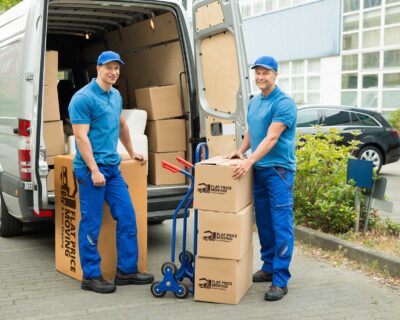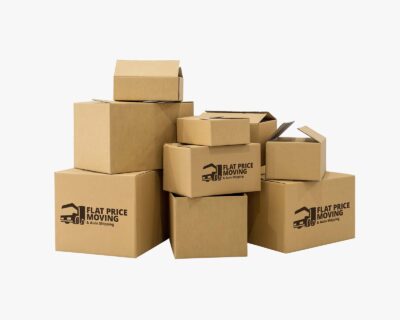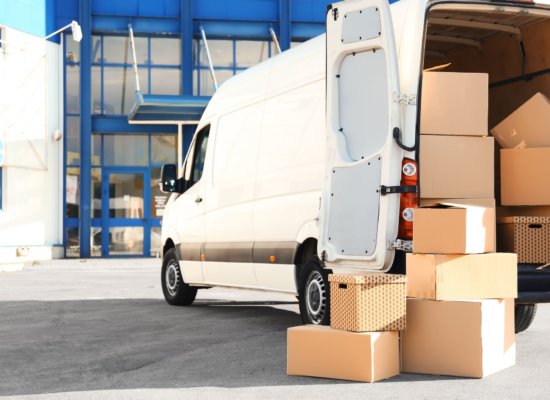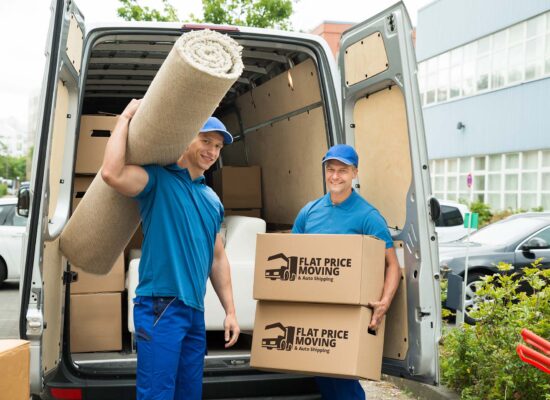Mastering the Art of a Successful Long-Distance Move – Top Tips
Moving is an exciting adventure filled with new opportunities and experiences. Whether you’re relocating for a job, education, or a change of scenery, mastering the art of a successful long-distance move can turn this journey into a seamless and enjoyable one. We’ll unveil top tips and expert advice to make your transition a resounding success.

So, how can you make your relocation a breeze? We recommend that you start by planning early and thoroughly, creating a comprehensive checklist to stay organized. Hiring professional long-distance movers can make a significant difference in managing the logistics and ensuring the safety of belongings. Prioritize decluttering and smart packing to streamline the process and reduce the volume of items you need to transport. Additionally, stay connected with the new community, research the area, and prepare for the adjustment ahead.
Choosing the Right Moving Company Is an Essential Part of a Successful Long-Distance Move
Selecting the ideal moving and auto transport company is paramount for the success of a relocation. Entrusting cross-country movers with the task of transporting your cherished possessions brings numerous benefits to the table.
A reputable moving company not only offers the expertise needed to handle the logistics of a move efficiently but also ensures the safety of all possessions. With the right choice, a customer can experience a stress-free moving process, knowing that all belongings are in capable hands.
Researching and Vetting Long-Distance Movers
Before making a decision, it’s crucial to thoroughly research and vet cross-country moving companies. Start by checking if the long-distance moving company is legitimate by verifying its licensing and insurance.
A valuable resource for this verification process is the Better Business Bureau website. This platform provides insights into a company’s reputation and customer feedback, helping people make an informed choice.
Asking for Recommendations and Reading Reviews
Consider asking for recommendations from friends, family, or colleagues who have previously used long-distance moving services. Their firsthand experiences can provide valuable insights. Additionally, reading online reviews can offer a broader perspective. Here’s a quick list to guide your research:
- Seek recommendations from trusted sources,
- Explore online reviews on platforms like Google,
- Pay attention to both positive and negative feedback to gauge overall satisfaction,
- Consider the company’s responsiveness, professionalism, and adherence to schedules in the reviews.
Combining recommendations and reviews will help you make an informed decision when selecting a moving and car shipping company, setting the stage for a successful and stress-free relocation.
Getting Multiple Quotes and Understanding the Cost Breakdown
This step allows you to compare services, prices, and the overall value each company provides. When requesting quotes, specify your needs, whether it’s auto transport services, full-service moving, or partial packing services.
Understanding the cost breakdown is essential – request detailed quotes that itemize all potential expenses, from transportation fees to packing materials and labor costs. This comprehensive approach ensures an individual selects the most suitable option while avoiding surprises down the road.

Pre-Move Planning Is a Must
Planning a move across the country involves a series of strategic steps that ensure a smooth transition to the new destination. One essential aspect of this preparation is downsizing for a relocation, which not only simplifies the process but also helps you start fresh. Don’t forget about all the necessary documents that need to be neatly organized.
Creating a Comprehensive Moving Timeline
A comprehensive relocation timeline can be a part of a moving binder, keeping you organized and on track. Here are some tips on how to craft an effective moving timeline:
- Start early – Begin planning and preparing for the relocation well in advance.
- Set milestones – Divide everything into smaller tasks and set deadlines for each one.
- Inventory belongings – Create an inventory of everything you plan to relocate.
- Budget wisely – Estimate costs, create a budget, and determine a way to save on all expenses.
- Research movers – Start researching and vetting companies.
- Notify important parties – Inform relevant parties, including utility companies, schools, and employers.
- Pack gradually – Begin packing non-essential items early, leaving only the relocation essentials for the final days.
Inventorying Your Belongings
When inventorying all belongings, it’s crucial to make decisions about what to keep, what to sell, and what to donate or discard. Choose certain boxes that would be just for items you don’t need anymore.
Consider donating items to organizations like Goodwill and the Salvation Army, as it not only reduces waste but also helps those in need. By decluttering and streamlining possessions, you’ll make the transition more efficient and cost-effective.
Important Documents to Gather and Organize
Gathering important documents can be a bit of a treasure hunt in the midst of relocation chaos, but it’s a crucial step in ensuring an easy transition. Think of it as a personal game of ‘Where’s Waldo,’ only with documents.
One fun tip to keep things lively is to turn it into a friendly competition with family or roommates to see who can find all the necessary papers first. Gather documents like IDs, passports, medical records, birth certificates, financial statements, and insurance policies. Place them in a designated ‘new documents folder’ or ‘treasure chest’ for easy access.

Get the Different Materials and Pack Like a Pro
Acquiring a variety of packing supplies and materials is essential for a hassle-free packing job. These materials ensure all belongings stay safe during transit. You’ll need sturdy cardboard boxes, bubble wrap, packing paper, packing tape, and labels. Having these materials on hand sets the stage for a well-organized relocation.
Tips for Packing Fragile Items Securely
Begin by wrapping delicate items in bubble wrap or packing paper to provide that much-needed cushioning. Opt for sturdy boxes that are the right size for fragile items, preventing excess movement.
To further safeguard breakables, fill all empty spaces in boxes with crumpled newspaper or packing peanuts. Don’t forget to label these boxes clearly so the cross-country movers know to handle them with care. For an added layer of protection, stack fragile boxes on top of heavier, sturdier ones, minimizing the risk of damage.
Here is an informative video on some packaging tips and tricks that can prove to be helpful throughout this journey.
Employ Different Labeling Techniques for Easier Unpacking
For a seamless unpacking experience, mastering the art of labeling is key. Employing various labeling techniques can turn anyone into a pro at quickly locating essentials. Here are some tips:
- Color coding – Assign different colors to rooms or categories and mark boxes accordingly. This visual cue will make it a breeze to know where each box belongs.
- Numbering system – Create a numbering system for boxes and keep an inventory list.
- Descriptive labels – Be specific. Instead of merely writing “kitchen,” jot down a list of the contents, such as “pots and pans” or “cutlery.” It saves time and reduces the guesswork.
- Priority labels – Designate some boxes as high-priority. Label them “Essentials” or “Open First” to ensure you have immediate access to crucial items like toiletries, a change of clothes, and basic kitchenware.
With these labeling techniques in the toolbox, unpacking becomes a smooth and efficient process, allowing anyone to settle into a new home like a pro.
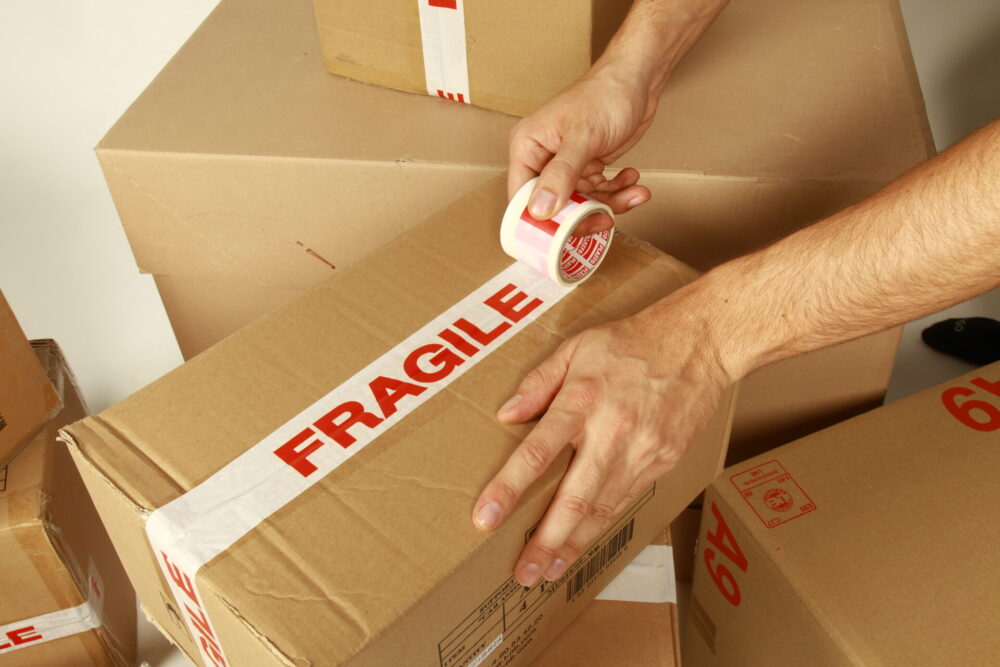
Have an Essentials Box or Bag Ready
A well-prepared essentials box or bag is a secret weapon for a seamless transition into a new home. Fill it with belongings you’ll need immediately upon arrival. This might include toiletries like toothbrushes and soap, a change of clothes, important documents like IDs and lease agreements, phone chargers, and a basic tool kit with essentials like a screwdriver and flashlight.
Think of it as a survival kit for the first day in the new space, ensuring that you have all the necessities close at hand without the need for frantic searching or unpacking.
Prepare Your Home for the Moving Day
Preparing a home for the big moving day involves a few key steps to ensure a smooth and efficient process. Clear pathways of obstacles and clutter to allow for easy movement of boxes and furniture. Shield the floors with cardboard or drop cloths to prevent any potential damage from heavy items or dirty shoes.
For delicate items on display, consider packing them in advance to prevent accidents during the relocation. Labeling rooms with their intended contents or destinations simplifies the process for cross-country movers. Lastly, disconnect any appliances that are part of the relocation to save time and prevent mishaps on the day.
Make Sure Everything Is Set for the Movers
Ensuring a smooth relocation day requires meticulous preparation. Begin by confirming that all belongings are packed and ready for transport. Double-check the weather conditions and make necessary accommodations, such as providing cover or protection for all items in case of rain or extreme heat.
Lastly, it’s customary to tip your movers as a gesture of appreciation for their hard work and professionalism. This final touch can leave a positive impression and make the relocation experience even smoother. With everything in place, you’re well-prepared to welcome the movers and embark on a successful relocation.

Give Yourself Time to Settle Up in Your New Home
Allowing ample time to settle into the new home is paramount. Efficiently unpacking and organizing belongings begins with prioritizing essentials for immediate comfort and functionality. Tackle one room at a time, sorting and decluttering as you go.
Invest in storage solutions like bins and shelves to maximize space, and label boxes clearly for easy access. Establishing a daily unpacking routine gradually brings a sense of normalcy to the new environment.
Moving Services
Whether you are moving from New York to Los Angeles or from San Francisco to Chicago, we can help you.
Read moreAuto-Transport
If your first concern is having your vehicle transported safely and efficiently, enclose shipping is the way to go.
Read morePacking Services
Our moving teams are trained to pack your belongings in the most efficient manner possible.
Read moreAre You Ready for a Smooth Relocation Journey?
As you embark on an exciting journey of relocation, remember that careful planning and organization are the best allies for a seamless move. At Flat Price Auto Transport & Moving, we specialize in making your relocation experience as stress-free as possible. With our expert team and comprehensive services, from efficient packing to reliable transportation, we’ve got your relocation covered from start to finish.
We recommend that you contact us today and discover how we can help with achieving a smooth and successful transition. A new adventure awaits, and we’re here to ensure it’s a journey filled with ease and satisfaction.
FAQ
What Should You Not Move Long Distance?
When relocating over long distances, it’s advisable to avoid relocating perishable items, hazardous materials, and any items that are prohibited by state or federal regulations. These may include flammable materials, explosives, chemicals, and certain live plants or animals. It’s essential to check with your chosen company and adhere to any restrictions they may have.
What Should I Take on a Long-Distance Move?
It’s crucial to take essential items with you, such as important documents (e.g., passports, IDs), valuable jewelry, prescription medications, and a small bag with a change of clothes and toiletries. Also, consider packing personal items with sentimental value or irreplaceable items that you prefer to transport yourself.
What Are the Common Challenges Faced During a Long-Distance Move?
Cross-country moves can present challenges such as coordinating logistics, dealing with unpredictable weather, managing fatigue from the journey, and adapting to a new environment. Additionally, you may encounter delays in delivery or temporary issues settling into the new location.
How Early Should I Start Planning for a Long-Distance Relocation?
It’s recommended to start planning the cross-country relocation as early as possible, ideally two to three months in advance. This allows ample time for tasks like finding a new home, hiring movers, and creating a detailed checklist.
How Do I Choose the Best Moving Company for a Long-Distance Relocation?
When selecting a relocation company for a cross-country relocation, look for factors like licensing and insurance, experience in relocations, transparent pricing, and positive customer reviews. Additionally, ask about their services, equipment, and any special considerations for the specific move.
What Should I Look for When Reading Reviews of Moving Companies?
When reading reviews of relocation companies, pay attention to the company’s professionalism, reliability, punctuality, and adherence to schedules. Look for feedback on their customer service, handling of belongings, and responsiveness to issues or concerns. Reading a variety of reviews can provide valuable insights into the overall customer experience with the company.




